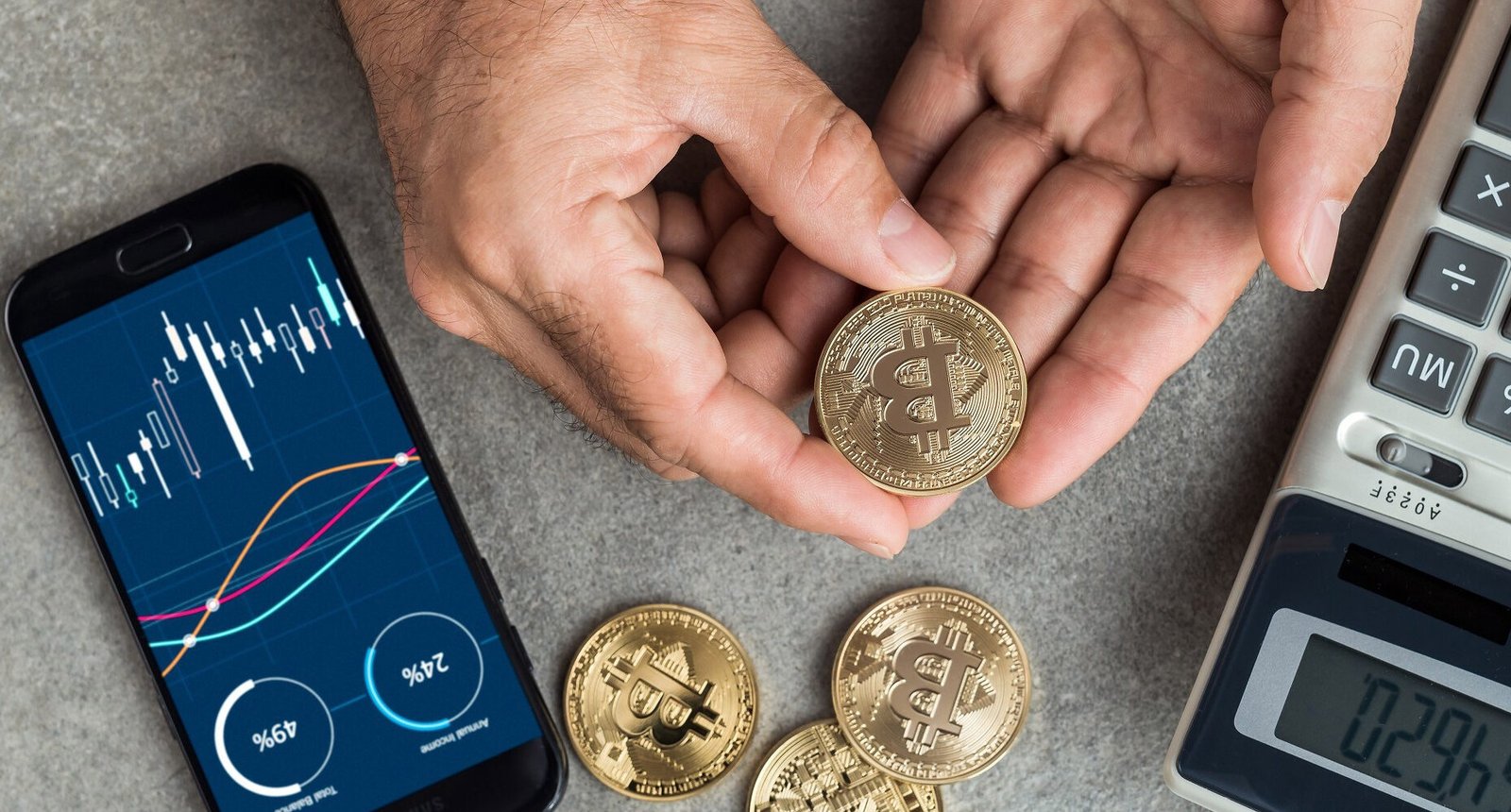In the span of a few breathtaking sessions, the cryptocurrency market erased roughly $19 billion in value, shaking out leveraged longs, rattling sentiment, and reigniting a familiar debate: is the cycle over—or is Bitcoin simply resetting for its next leg up? Historically, violent drawdowns have preceded outsized rallies as excess leverage is purged, weak hands capitulate, and patient capital rotates in. That dynamic is back in focus now, with an audacious thesis on the table: the latest crypto crash may have opened the door to $200,000 Bitcoin in 2025.
This isn’t a moonshot proclamation tossed into the wind. It’s a framework grounded in the halving supply schedule, the maturation of institutional adoption, the mechanical flows around spot Bitcoin ETFs, a slow but persistent broadening of on-chain utility, and an improving macro backdrop that could shift from rate headwinds to liquidity tailwinds. Add in the psychological reset that follows sharp selloffs, and you get a market that looks, paradoxically, healthier after pain than before it.
In this Finance Redefined deep dive, we’ll unpack the path from crash to potential all-time highs. We’ll connect macro to micro, derive pricing bands from past cycles, examine catalysts unique to this era, and outline the risks that could delay or derail the move. Whether you’re a long-term accumulator, an active trader, or a curious onlooker, the goal here is clarity: a realistic, data-anchored roadmap for Bitcoin in 2025.
Why a Crash Can Be Constructive in Crypto
The leverage purge that resets the board
Sharp downturns in crypto often coincide with mass liquidations that compress open interest, normalise funding rates, and reduce the “paper supply” of coins available to sell. When funding flips neutral or negative and derivative froth bleeds out, spot buyers regain influence. In that environment, Bitcoin behaves more like an asset driven by on-chain accumulation and less like a casino chip jerked around by perpetual swaps. A $19B wipeout sounds catastrophic; in practice, it may be the fast-forward button to a cleaner market structure.
Sentiment whiplash and the opportunity set
Markets rarely top on fear or bottom on euphoria. After a crash, social and search interest spike while risk management tightens. Historically, those conditions have preceded multi-month uptrends, especially when they align with halving cycle tailwinds. If you believe that scarcity plus demand growth drives price over the long run, then the post-crash landscape—less leverage, more caution, cheaper entry points—has the raw ingredients for a trend reversal.
The 2025 $200K Thesis: Pillars and Pathways

Programmed scarcity and the halving glidepath
Every halving reduces new Bitcoin issuance, tightening the flow of fresh supply. This mechanical “supply shock” doesn’t guarantee immediate price appreciation, but across cycles it has historically pulled forward multi-quarter rallies as miners adjust, long-term holders resume accumulation, and marginal buyers face less sell-side pressure. The 2024–2025 window, coming on the heels of a supply cut, mirrors earlier epochs where price discovered a higher equilibrium over time.
Key idea: As miner rewards drop, miners with thinner margins may sell fewer coins or consolidate; stronger miners can hold inventory longer. Net effect: a softer, less constant stream of coins hitting exchanges, which amplifies the impact of incremental institutional demand.
Institutional demand via spot ETFs and custody rails
The current cycle differs from 2017 and even 2020 because spot Bitcoin ETFs provide regulated, brokerage-account access to the asset. That channel matters for retirement platforms, family offices, and asset allocators with strict mandates. As operational frictions fall—think improved custody, clearer accounting, and better compliance workflows—allocations that once looked complicated become checkbox-simple.
Even modest rebalancing can move the needle. A tiny percentage shift from global equities or bonds into Bitcoin represents billions in potential inflows. ETFs compress this journey from “interest” to “execution,” turning latent curiosity into systematic purchases. In a post-crash environment where price is more attractive, those flows can be surprisingly persistent.
Macro liquidity turning from headwind to tailwind
Crypto breathes the same air as other risk assets: liquidity and rates. As inflation cools and growth stabilises, central banks gain room to pause or ease, and investors rotate from cash into higher-beta exposures. Historically, easing cycles and improved global liquidity have supported cryptocurrency market recoveries. If 2025 brings even a modest drift toward lower real rates and improved risk appetite, Bitcoin can benefit disproportionately due to its convex supply profile.
On-chain fundamentals that mature with price
Price is a lagging indicator of utility, but rising floors often reflect increasing on-chain activity: better layer-two throughput, more efficient payment rails, growing hash rate, and above all, stronger holder composition. When coins migrate to cold storage, exchange balances trend down, and long-term holders control a larger share of supply, spot-driven rallies become stickier. That’s the scaffolding under any case for six-figure Bitcoin.
Building a Realistic Roadmap to $200K
Stage 1 (Post-Crash Stabilisation): From panic to balance
After the $19B slide, watch three signals. First, funding rates and open interest should compress to historically normal levels, indicating leverage has been purged. Second, exchange inflows/outflows will reveal whether sellers are exhausting or if distribution continues. Third, the MVRV and realised price bands help anchor where support may coalesce as market participants reset their cost basis.
A patient stabilisation phase often lasts several weeks to a few months. Price carves a range while on-chain metrics show renewed accumulation by entities with longer holding periods. This is the time when narrative pessimism is loudest, but structural improvement is quietest.
Stage 2 (Accumulation and Re-Rating): Catalysts align
Next, catalysts crowd the tape. ETF net inflows string together multiple positive weeks. Miners reduce net distribution as hash price normalises post-halving. Macro prints ease recession fears. Developer momentum on scaling solutions and security upgrades underlines long-term viability. Price begins to respect higher lows, testing resistance built during the panic. As ranges break, sidelined capital chases confirmation, pushing Bitcoin into a steady up-channel.
Stage 3 (Trend Acceleration): Momentum feeds flows
With the structure cleaner and catalysts visible, trend followers re-enter. Momentum funds, systematic strategies, and discretionary macro desks that require confirmation begin to add exposure. The feedback loop tightens: a higher price begets stronger media coverage, attracting incremental retail flows. At this point, volatility expands with upside bias, and the market debates whether six figures are plausible.
Stage 4 (Price Discovery): The $200K debate
Breaking new highs shifts the conversation from “recovery” to “discovery.” Scarcity narratives collide with valuation frameworks, from stock-to-flow-style heuristics to discounted spend-based models. The $200K level isn’t magic; it’s a round number that could act as a magnet if flows remain positive and supply remains tight. In discovery phases, overshoots are common. The critical task is risk control, not clairvoyance.
Valuation Anchors: Learning from Prior Cycles

Multiples on realised value and cycle bands
Two non-perfect but useful anchors are multiples of the realised price and the family of long-term moving average bands. These tools don’t predict tops; they contextualise distance from cost basis and trend health. In prior cycles, sustained excursions above realised price marked durable bull phases, while multi-standard-deviation moves beyond long-term bands signalled late-stage exuberance. For 2025, watching how far price stretches above those anchors can help separate healthy expansion from froth.
Supply dynamics: Dormant coins and exchange balances
The proportion of dormant coins staying off exchanges is a quiet but powerful driver. When more supply is locked in cold storage and exchange balances drop, marginal demand impacts price more acutely. If the post-crash cohort chooses self-custody at higher rates—perhaps nudged by improved wallet UX and institutional-grade custody—the float shrinks, tightening the spring.
What’s Truly Different This Time
Real distribution through regulated wrappers
Unlike 2017’s ICO mania or 2020’s purely crypto-native leverage, this cycle offers regulated distribution through ETFs and mainstream brokers. That doesn’t immunise the market from volatility, but it does expand the surface area for flows. Retirement accounts that previously could not buy Bitcoin now can, and advisors who avoided the asset for operational reasons have credible paths to allocate.
Better plumbing, fewer single points of failure
Post-contagion cleanup improved industry plumbing. Proof-of-reserves, diversified custodial arrangements, segmented risk in prime services, and improved compliance have reduced some single points of failure. The market is still young, but it is learning. That learning curve is part of the reason a harsh selloff can set the stage for a healthier upcycle.
Convergence of narratives: digital gold plus network utility
Earlier cycles forced a false choice between digital gold and payment network narratives. In 2025, the two can coexist. Bitcoin remains the flagship store-of-value meme, while layer-two and protocol upgrades expand transactional possibilities. You don’t need every coffee to settle on-chain to justify a higher market cap; you need conviction that scarcity is defensible and ownership is growing.
Risks That Could Delay or Derail the $200K Scenario
Macro shocks and policy missteps
A reacceleration in inflation or an unexpected policy shock could tighten financial conditions, yanking liquidity from risk assets. Bitcoin has outperformed in various macro regimes, but it rarely thrives when real yields spike or credit tightens abruptly. Investors should game-plan for these shocks with position sizing that respects volatility.
Regulatory reversals and market structure incidents
While the trend has been toward clarity, regulation remains uneven across jurisdictions. An enforcement surprise, adverse tax treatment, or custody setback could sap inflows. Likewise, a high-profile exchange incident or smart contract failure in adjacent markets could dampen sentiment across the cryptocurrency market.
Miner stress and network health
After halvings, miner economics can wobble. If price lags too long, smaller miners capitulate, temporarily reducing the hash rate. The network has withstood such episodes before, but they can amplify bearish narratives in the short run. Monitoring miner balance behaviour and treasury liquidations provides early clues.
Narrative exhaustion and buyer fatigue
Even in bull markets, there are pauses. If buyers tire at key levels and the media cycles into “bubble” framing too soon, Bitcoin can consolidate below round numbers for longer than impatient traders expect. That’s not failure; it’s digestion. But it can push timelines.
Also More: Bitcoin Today Rally Stalls at $11K amid US Shutdown Risk
Strategy: How Sophisticated Participants Navigate the Path
Accumulation over prediction
Trying to pick the exact low after a crash is seductive, but the higher-probability approach is structured accumulation. Dollar-cost averaging through stabilisation, increasing size as confirmations stack up, and trimming into vertical moves keeps emotions in check. This method leverages crypto’s fat-tailed upside without demanding perfection.
Blending on-chain, technical, and flow data
A mature process triangulates signals. On-chain metrics flag accumulation, technical structure marks risk points, and ETF flow data indicates marginal demand. No single indicator tells the whole story, but together they define risk and timing far better than vibes.
Risk management as alpha
With volatility a feature, not a bug, the advantage goes to investors who define invalidation levels, respect drawdowns, and avoid hidden leverage. That often means using spot over futures, preferring custodial setups with strong controls, and separating long-term holdings from trading capital. In a march toward $200K, the difference between arriving and getting shaken out is discipline.
Narrative Catalysts to Watch in 2025
Halving-plus adoption headlines
The interplay of “supply cuts” and “new buyers” is meme-friendly, which matters in crypto. Expect waves of coverage around institutional adoption, new corporate treasury experiments, and incremental regulatory clarity. Each headline knits the thesis tighter for mainstream audiences.
Product innovation: safer, simpler, faster
Wallets that abstract away seed phrases, layer-two solutions that cut fees, and cross-border settlement pilots can all nudge fence-sitters into the market. When user experience improves, retail adoption tends to re-accelerate, feeding demand during price discovery.
Intermarket dynamics with gold and tech
As Bitcoin leans into the “digital gold” framing, relative performance versus physical gold and high-beta tech becomes a narrative scoreboard. Rotation between these assets can fuel incremental flows, especially among macro funds that trade baskets rather than tickers.
Putting $200K in Perspective
Round numbers are milestones, not destinations
The $200K figure looms large, but it is a waypoint in a longer arc. Whether the cycle peaks modestly below or exuberantly above that marker, the more salient story is the persistent climb in realised value and the broadening base of holders. Chasing round numbers can lead to poor decisions; preparing for the ranges around them leads to resilience.
Time, not timing
Most of Bitcoin’s long-term ROI accrues in surprisingly short bursts. Missing a handful of powerful days can maim performance. That’s why a thoughtful, time-diversified plan often outperforms surgical attempts to catch every bottom and sell every top. In a market that moves by step changes, your edge is staying power.
Conclusion
The $19B crypto crash felt brutal in the moment, but it may have done the heavy lifting a healthier bull market requires. Leverage is lower. Scepticism is higher. Prices are more reasonable. Against that reset, the case for $200,000 Bitcoin in 2025 rests on tangible pillars: programmed scarcity after the halving, scalable institutional adoption via spot ETFs, a friendlier macro liquidity backdrop, and sturdier on-chain fundamentals that tighten supply exactly when demand simplifies.
None of this is inevitable. Macro can surprise, policy can wobble, miners can strain, and narratives can tire. But when you stitch the signals together, the path is credible: stabilise, accumulate, re-rate, accelerate, discover. If 2024 was about clearing the underbrush, 2025 could be about building the house. For investors, the imperative is the same as ever in crypto: respect risk, trust frameworks over feelings, and let time in the market do the compounding.
FAQs
Q: Did the $19B crash change Bitcoin’s long-term thesis?
It challenged sentiment but improved structure. By flushing leverage and resetting expectations, the selloff created better conditions for a sustainable advance. The fundamental case—a fixed supply schedule, growing institutional rails, and expanding ownership—remains intact.
Q: Why is $200K plausible for Bitcoin in 2025?
The combination of reduced issuance post-halving, continued ETF inflows, improving macro liquidity, and tighter exchange supply can produce a demand-over-supply imbalance. In price discovery, such imbalances often overshoot conservative targets, making $200K a reasonable waypoint rather than an extreme.
Q: What could invalidate the $200K scenario?
A sharp rise in real rates, a major regulatory setback, or a significant market-structure failure could delay or cap upside. Prolonged miner stress or a collapse in risk appetite would also weigh on price. None of these is certain, but they’re worth monitoring and hedging.
Q: How should long-term investors approach this market?
Favour structured accumulation, segregate long-term holdings from trading capital, and use on-chain and flow data to add on confirmations. Keep leverage modest, define risk limits, and avoid reacting to every headline. In crypto, surviving the noise is half the game.
Q: Are altcoins likely to outperform Bitcoin if the thesis plays out?
Historically, altcoins often lag early in a Bitcoin-led recovery and then gain beta later once liquidity broadens. Selectivity is crucial; focus on assets with clear utility, robust token economics, and strong developer ecosystems. Even then, understand that beta cuts both ways in drawdowns.




















